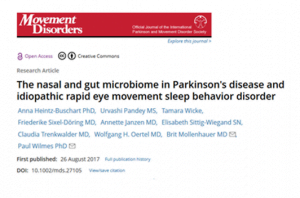Scientists have discovered a new method of observing the brain changes caused by Parkinson's disease, which destroys motor neurons. Their research suggests that the damage could be tracked by observing fluid changes in a specific region of the brain.
Using a type of MRI that distinguishes between water in brain cells and “free” water outside of cells, the researchers focused on the substantia nigra, a brain structure in which Parkinson's disease kills neurons that use the chemical dopamine to communicate with other cells. The data demonstrated that in healthy individuals, the amount of free water in that area of the brain stayed the same over the course of a year, but increased in patients diagnosed with early-stage Parkinson’s during the same period, and increased further over the next three years. These results confirm and expand on a prior study that measured free water over just one year. The new findings also revealed the increase in free water was linked to worsening symptoms.
The researchers used a scale to evaluate patient's movement problems, with Stage One on the scale being the least severe and Stage Five being the most advanced. Patients who moved up a stage on the scale during the four years of the study had a greater free water increase than patients who remained at the same stage, suggesting the change reflected Parkinson's-related damage to neurons.
The study showed that a greater free water increase in the substantia nigra was associated with a decrease in dopamine neuron activity in one of these nearby regions, supporting the idea that free water changes are related to progression of the disease.
Paper: "Progression marker of Parkinson’s disease: a 4-year multi-site imaging study"
Reprinted from materials provided by the NIH-National Institute of Neurological Disorders and Stroke.


